July 14, 2021
Evolved to be Small: Tiny Plants with Leslie Halleck
What does “small plant” mean to you?” Heartleaf rosemallow (Hibiscus martianus) is certainly smaller than five-foot-tall ‘Moy Grande’ hibiscus with its dinner-plate-sized flowers. Instead, its heart-stealing crimson blossoms barely span two inches. Compact at 2-3’ tall, it’s native to South Texas, so I keep it in a winter-protected container on my morning sun patio.
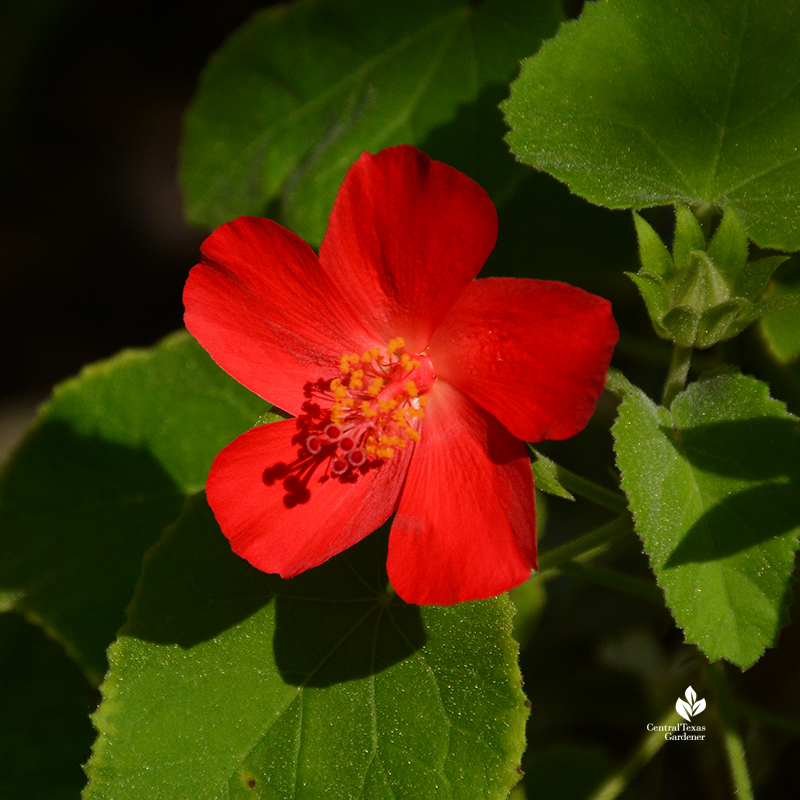
Many of us refer to tree saplings, plant starts in 4” grow pots, and seedlings as “babies” or “tiny.” The bulbils that formed from my Mangave ‘Bloodspot’ flowers were pencil-eraser-sized until they got big enough to remove from the stalk—still “tiny” at two inches. These shots are from last November when we’d covered the patio with greenhouse plastic.
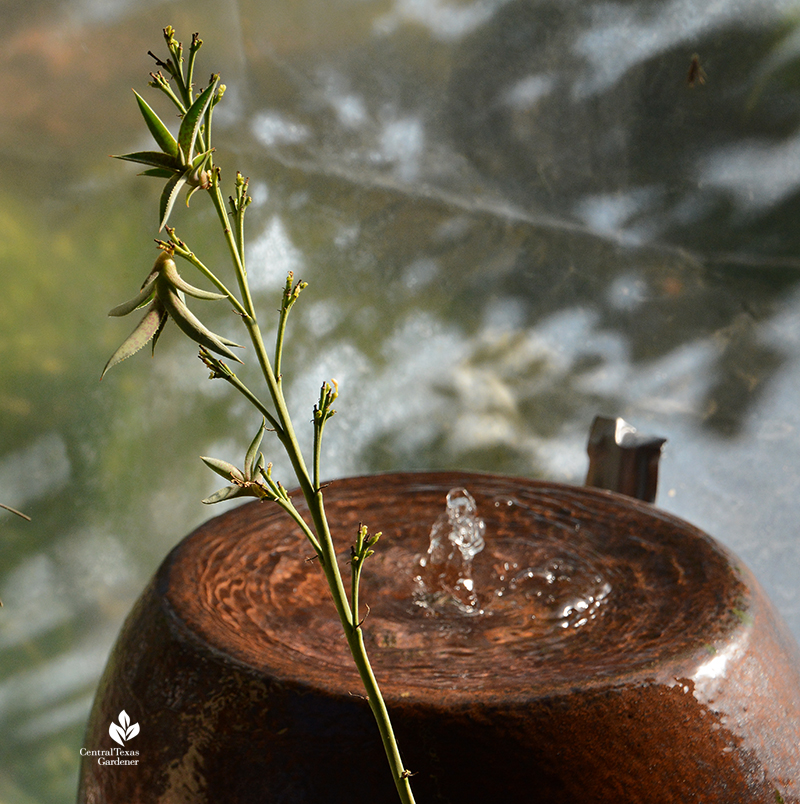
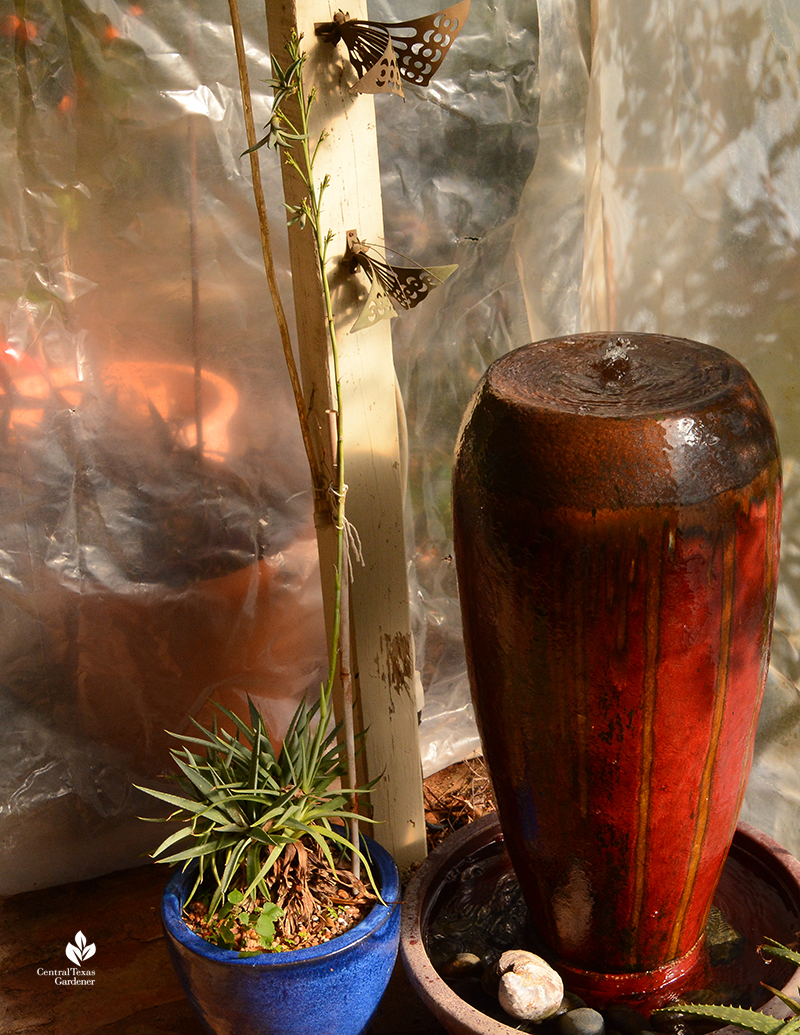
In a segment on succulent propagation with Jeff Pavlat from the Austin Cactus & Succulent Society, he told us that bulbils, instead of seeds, form on unpollinated succulent flowers.
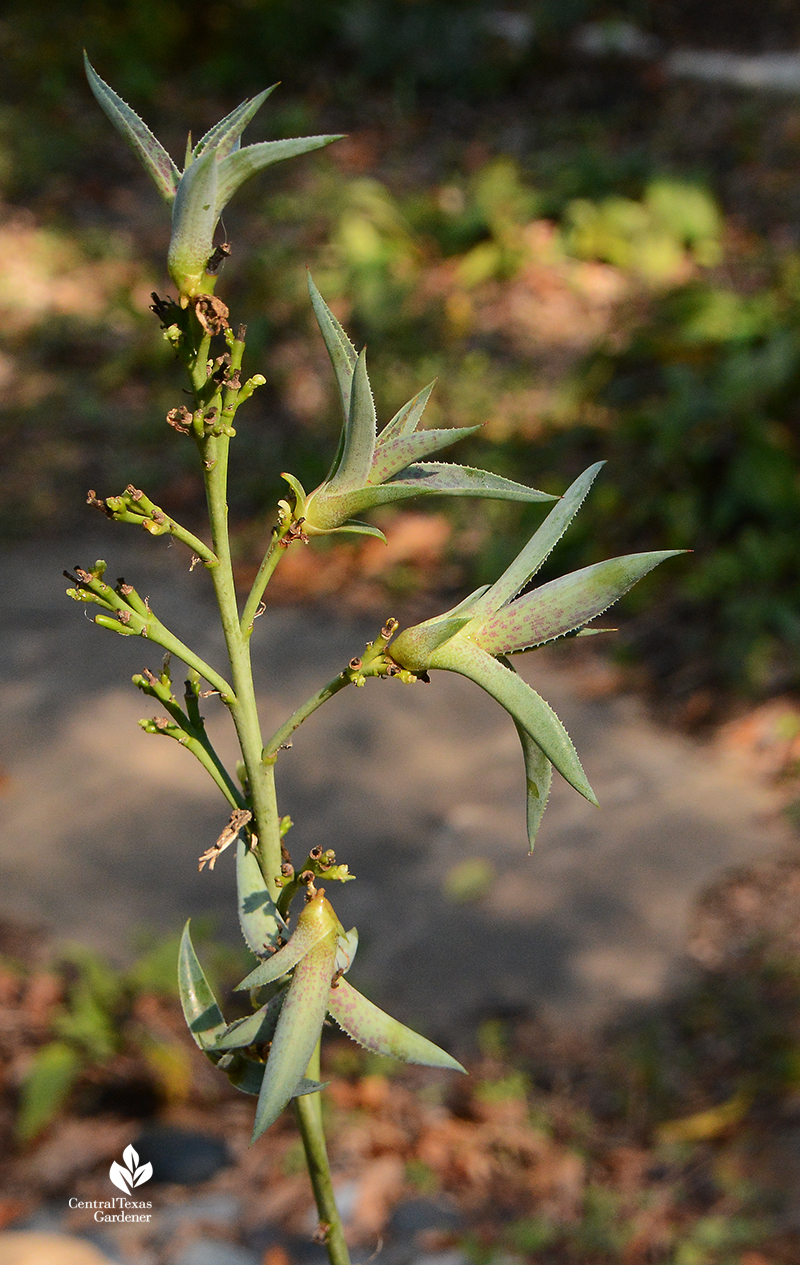
Sadly, we lost the mother plant and some of the potted-up bulbils in the February freeze, despite our attempt to keep them warm. Luckily, some of the plantlets from the first bloom in 2018 made it.
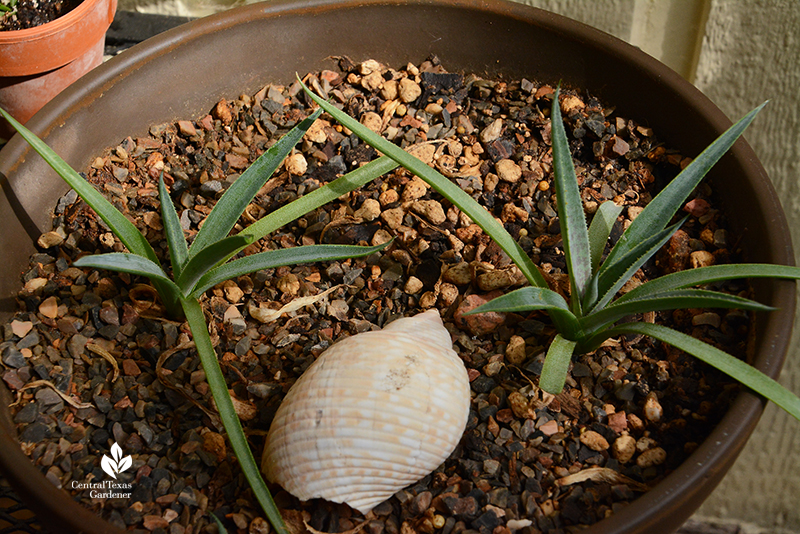
And so did some of the new ones. Small now, they’ll grow up to be “big” like mom—a hefty 12-15”.
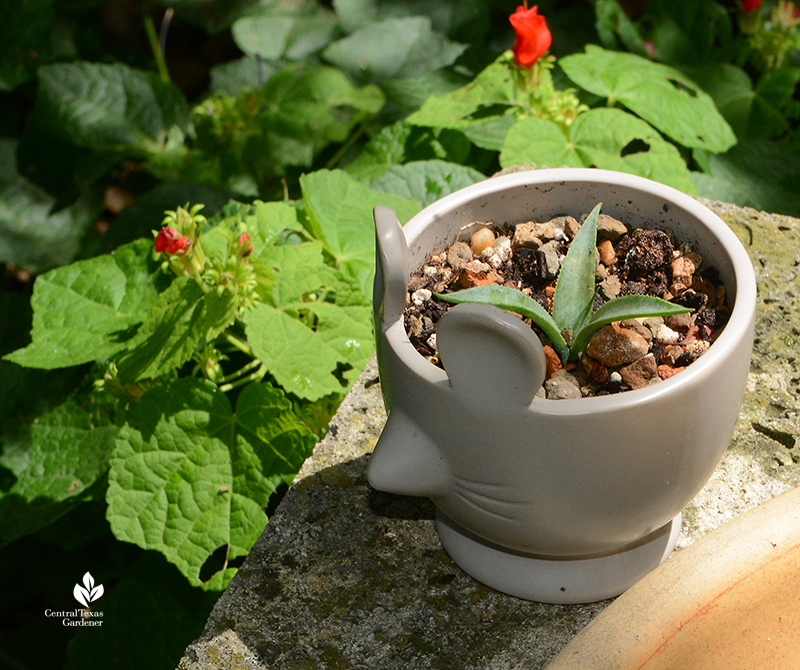
We’ve also got dwarf plant varieties, from tomatoes to lettuces, bred for us who want to grow fresh food in containers on patios and balconies or in a few square feet of soil. Jen McGuinness, author of Micro Food Gardening, showed us how.
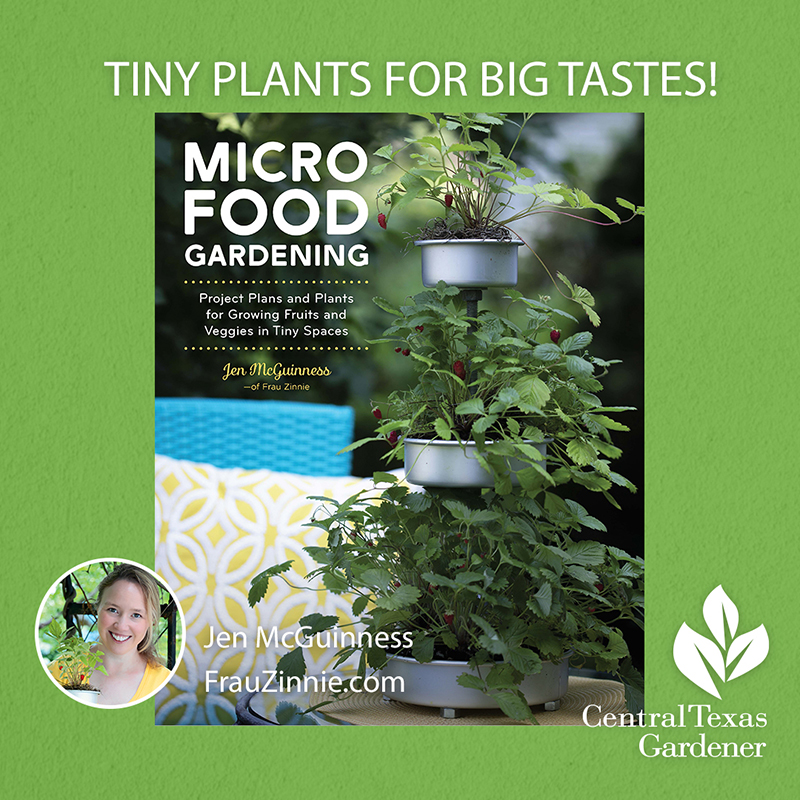
And then, there are plants that evolved to be small—some as tiny as your thumbnail at maturity. This week via the Zoom room, Leslie Halleck nurtures our big houseplant love with truly petite plants that tuck into window sills, bookshelves, and a spot on your desk.
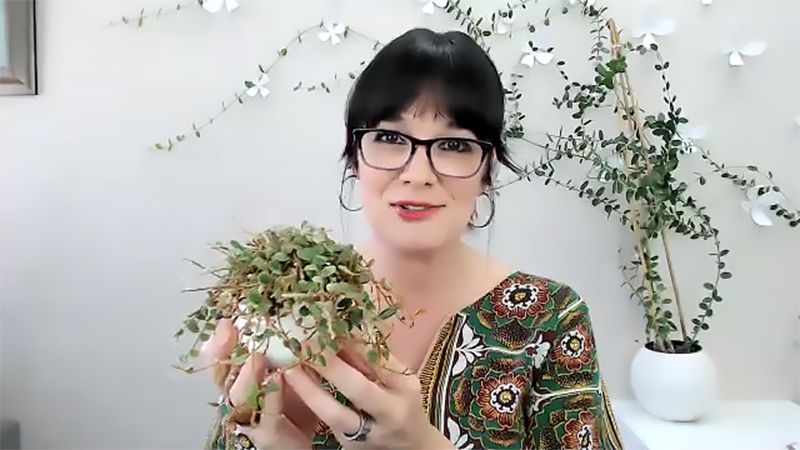
Leslie’s latest book, Tiny Plants: Discover the Joys of Growing and Collecting Itty-bitty Houseplants, makes it easy to grow plants that never grow up. In teacups, inch-wide pots, and under Mason jars and down-sized bell jars, satisfy your plant passion with succulents, miniature orchids, ferns and much more.
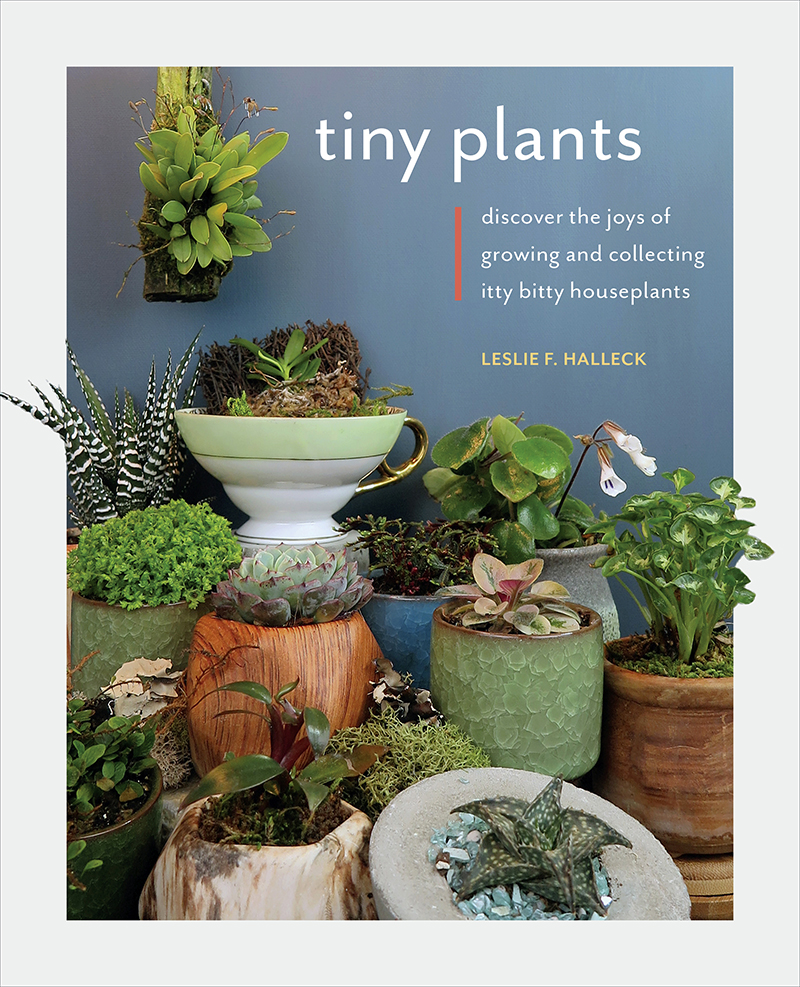
“I’m really talking about genetically miniature species of plants. We’re not talking about artificially controlling plant size, like bonsai. . . or growth regulators used in the commercial industry to keep plants smaller. We’re talking about plant species that are truly itty bitty at mature size and that’s how they grow in their natural environments. These are plants that if you don’t have a lot of space can really make indoor gardening a lot easier for you,” she said.
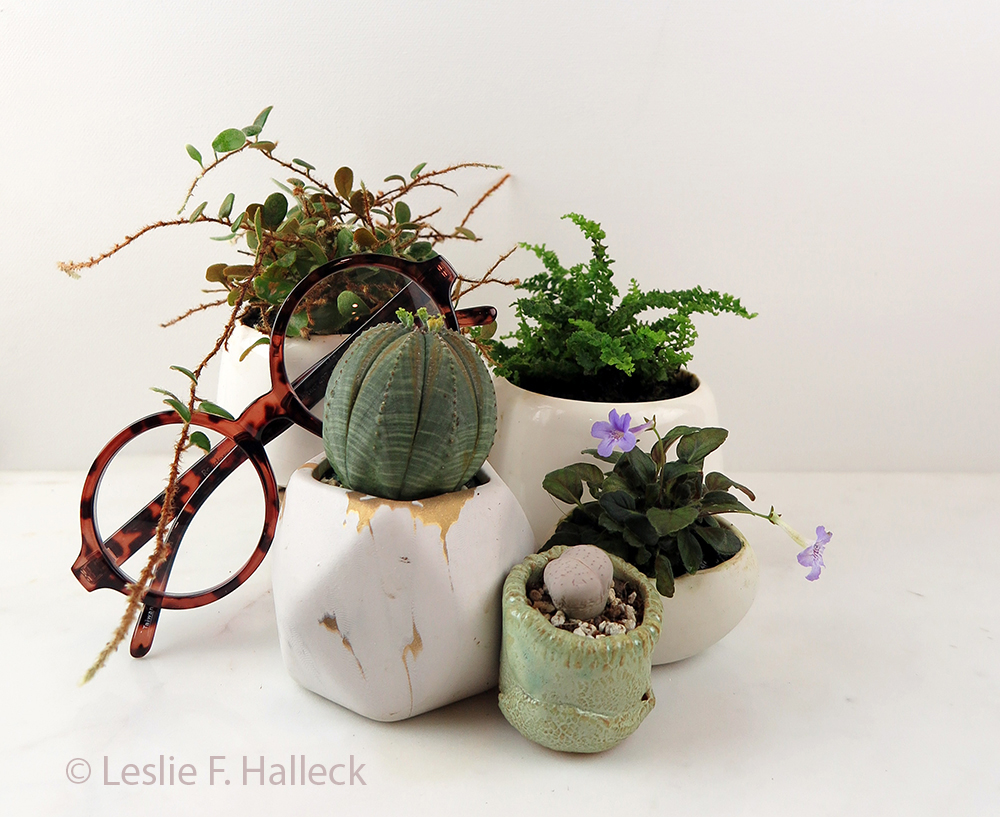
A Certified Professional Horticulturist, Leslie presents the science behind successful plant parenthood. First, she breaks down plants by basic categories (terrestrial, epiphytic, lithophytic, and aquatic) that dictate where and how we grow them. There are also hemiepiphytes that can be terrestrial or epiphytic at different life stages—like creeping button fern.
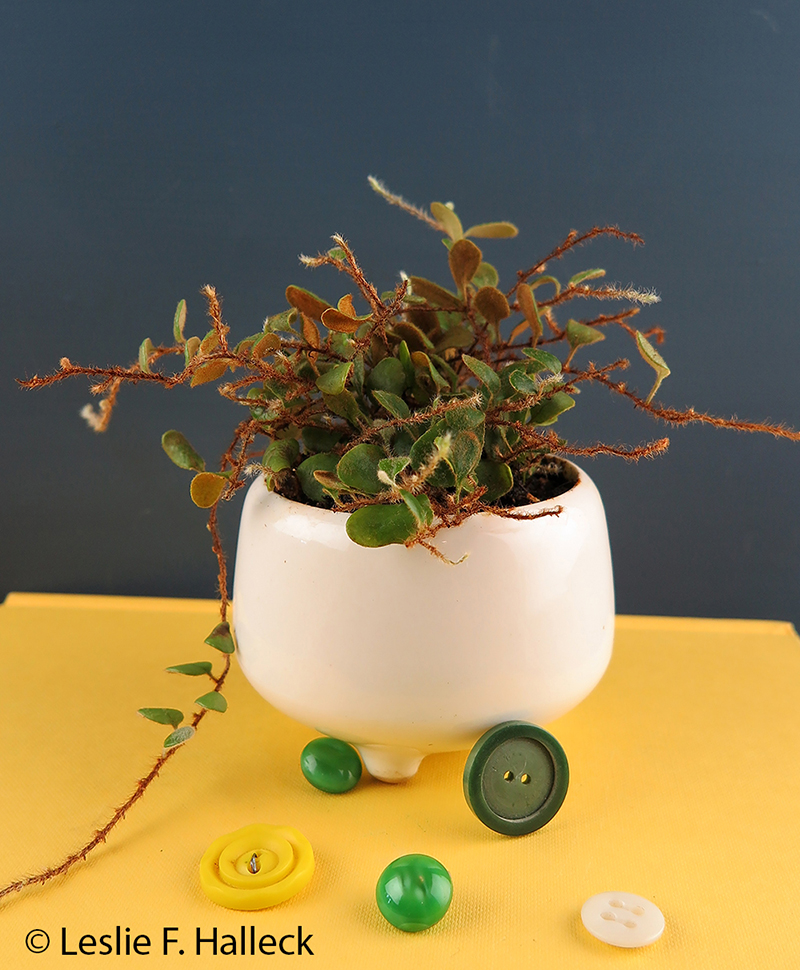
Just like with garden plants, it’s important to understand root length, moisture requirements, and soil preferences. The size and type of vessel we select—porous or non-porous—is especially critical since the container’s their whole little world. We can grow bladderwort in a teacup without a drainage hole, since these plants naturally grow in wet, boggy conditions.
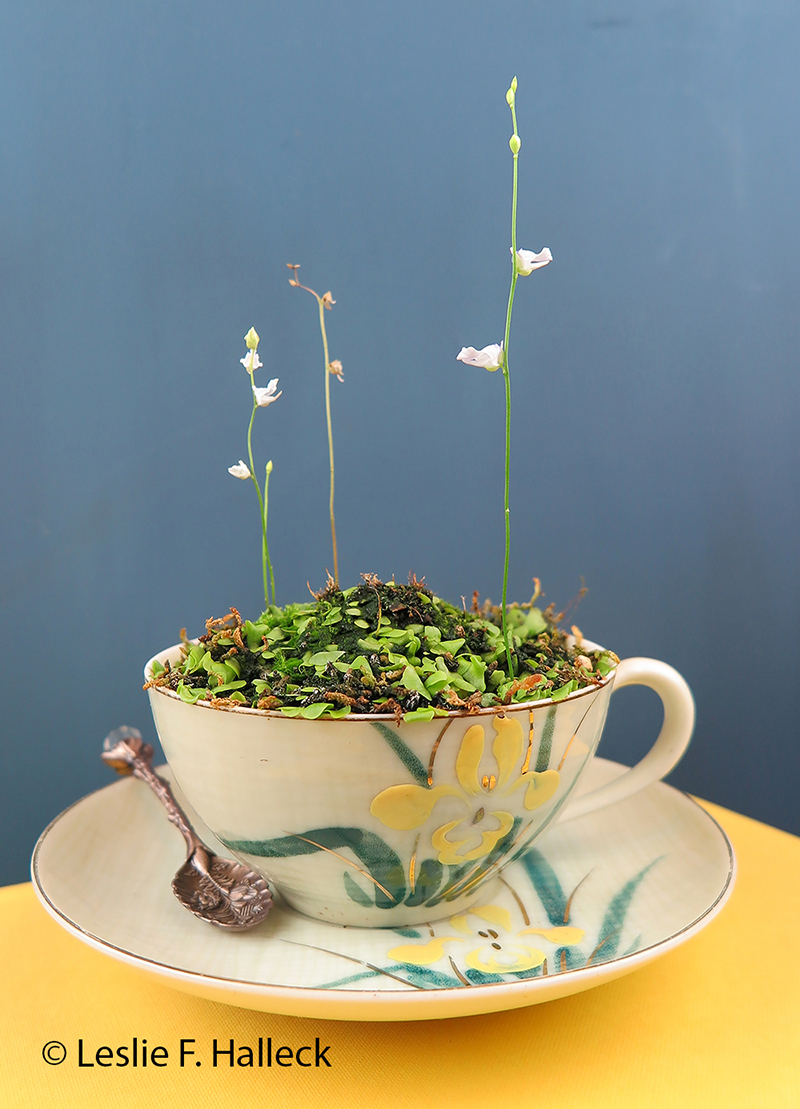
But, if we stick a succulent like thimble cactus into that spot, it won’t last long! Like all succulents, it wants perfect drainage and a grainy, rocky succulent mix.
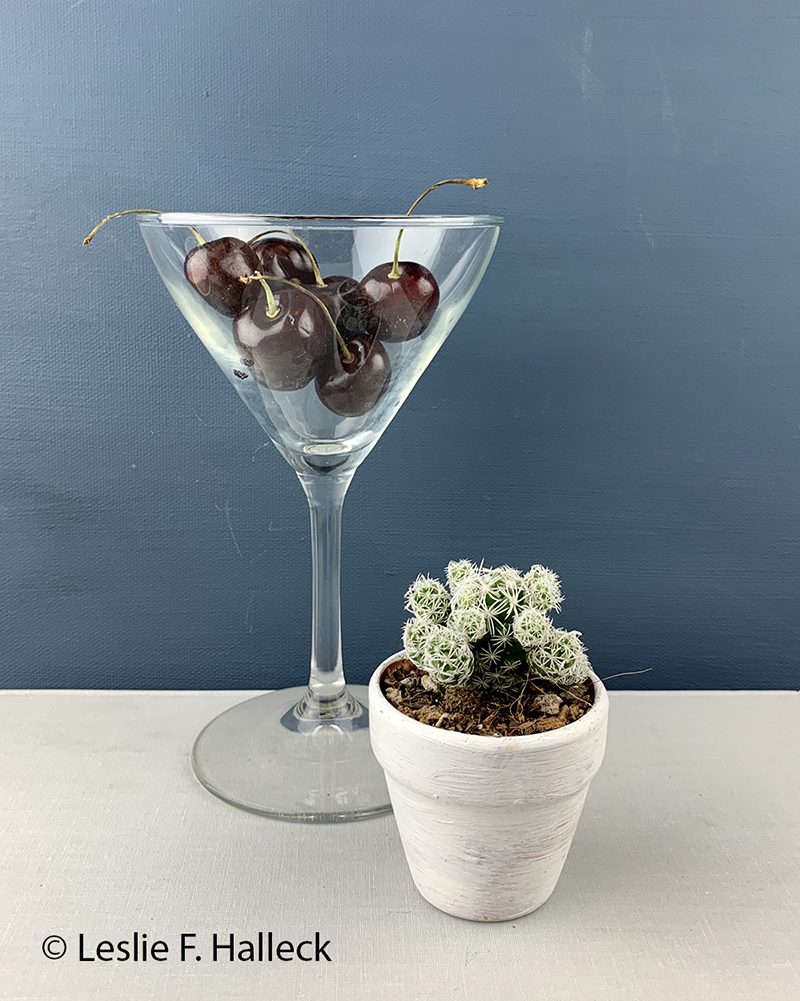
Others—like African violets, micro orchids, and little sinningias—want an environment that holds moisture but allows it to drain.
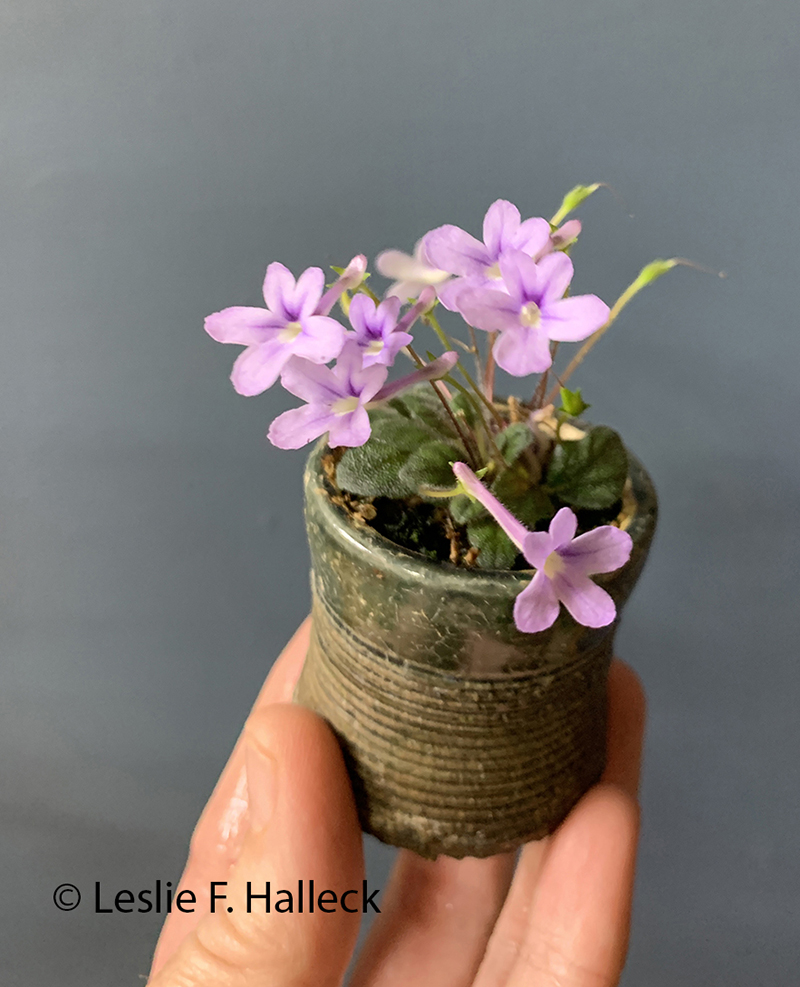
Note: All cultivation notes in Tiny Plants apply to regular-sized houseplants, too. That includes lighting. Along with tips for artificial lights, Leslie illustrates how the season and sunlight’s orientation make a big difference. For example, she’ll never put that little button fern in a west-facing window that gets four or five hours of hot sun. “This one’s going to go in an east or north facing window. It’s not going to like that hot direct afternoon sun, it’ll burn.”
On the other hand, succulent Haworthia angustifolia happily accepts north or west-facing windows.
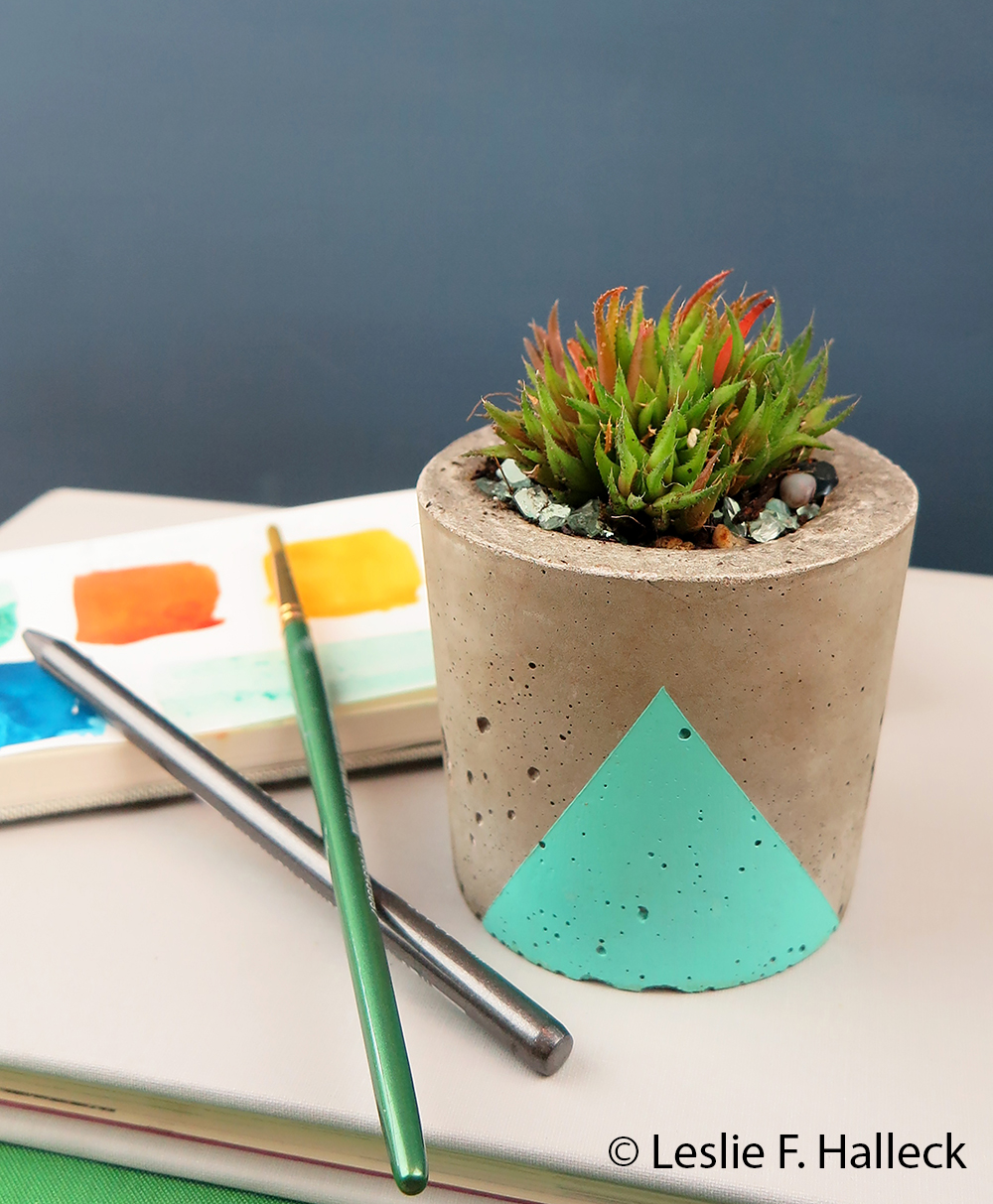
In her plant profiles, Tiny Window Sill Plants and Tiny Plants Under Glass, Leslie gives you everything you need to know, from container and soil selection to propagation tips, temperature, lighting and fertilizer needs. This one’s a clinging snake fern or vine fern, an easy high humidity fern that beginners can grow in a bell jar or under a Mason jar.
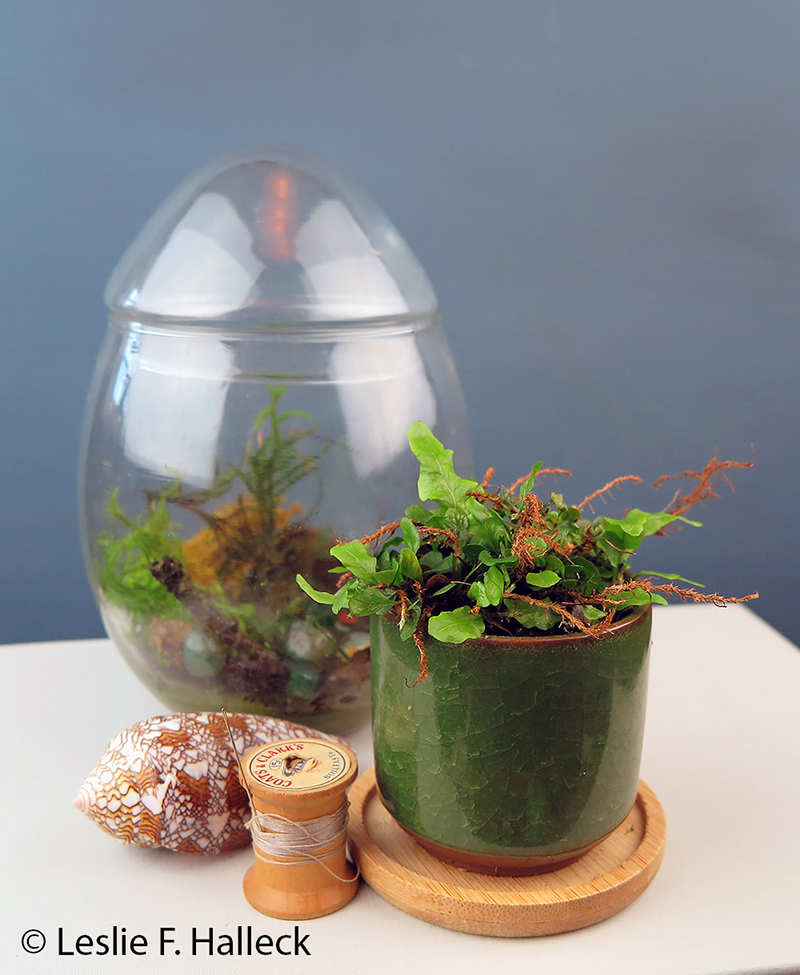
Along with artful display techniques, Leslie includes a source list for supplies and plants—including those that specialize in vivariums and aquariums.
Also, check out Leslie’s other books that I consider must-haves for every gardener’s library! And watch our past CTG segments.
Plant Parenting: Easier Way to Make More Houseplants, Vegetables and Flowers
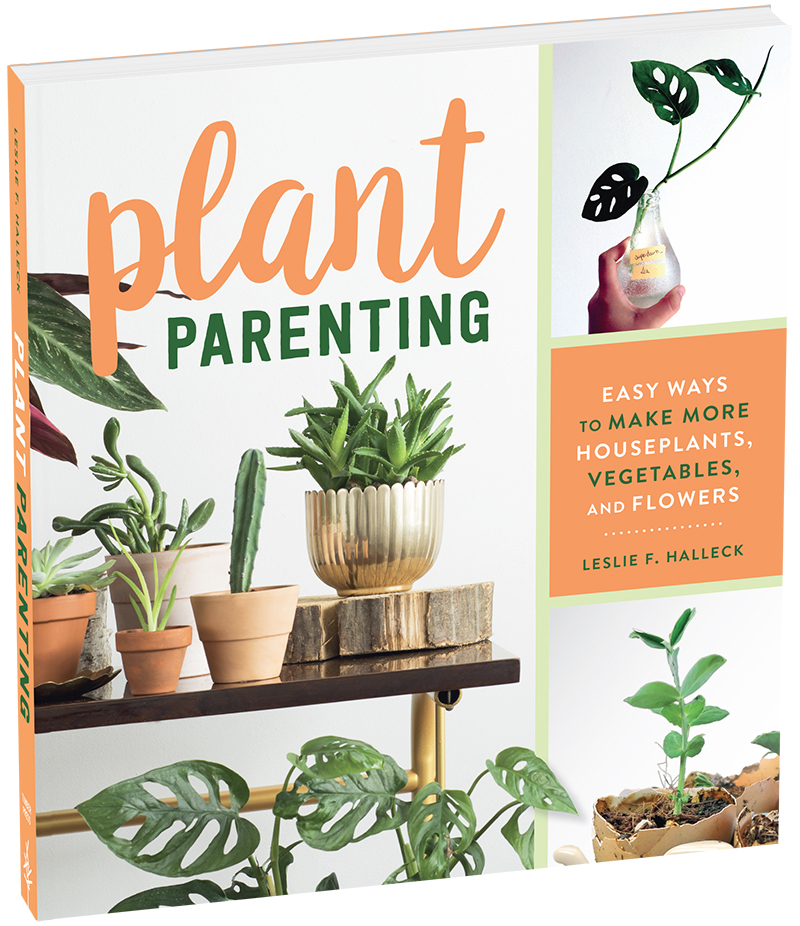
Gardening Under Lights: The Complete Guide for Indoor Growers
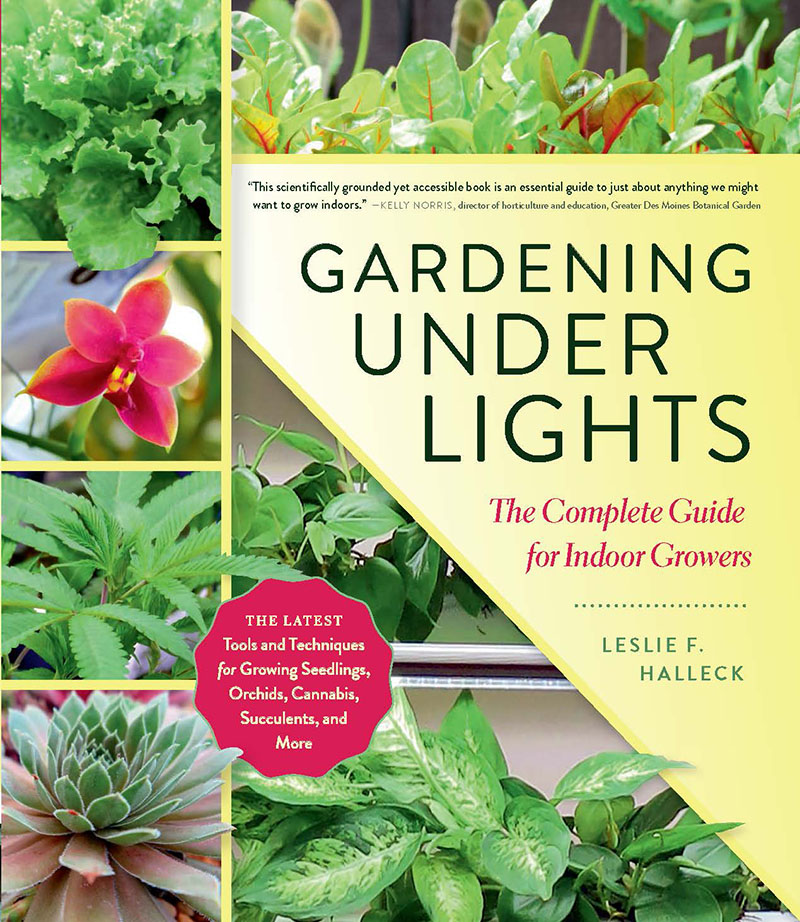
Plant Swap Prep (good propagation tips)
Bringing Plants Indoors for Winter
Follow Leslie on Twitter and Instagram at @lesliehalleck and check out her website to grow your horticultural knowledge.
Watch Tiny Plants now!
Thanks for stopping by! See you next time, Linda
tags:







